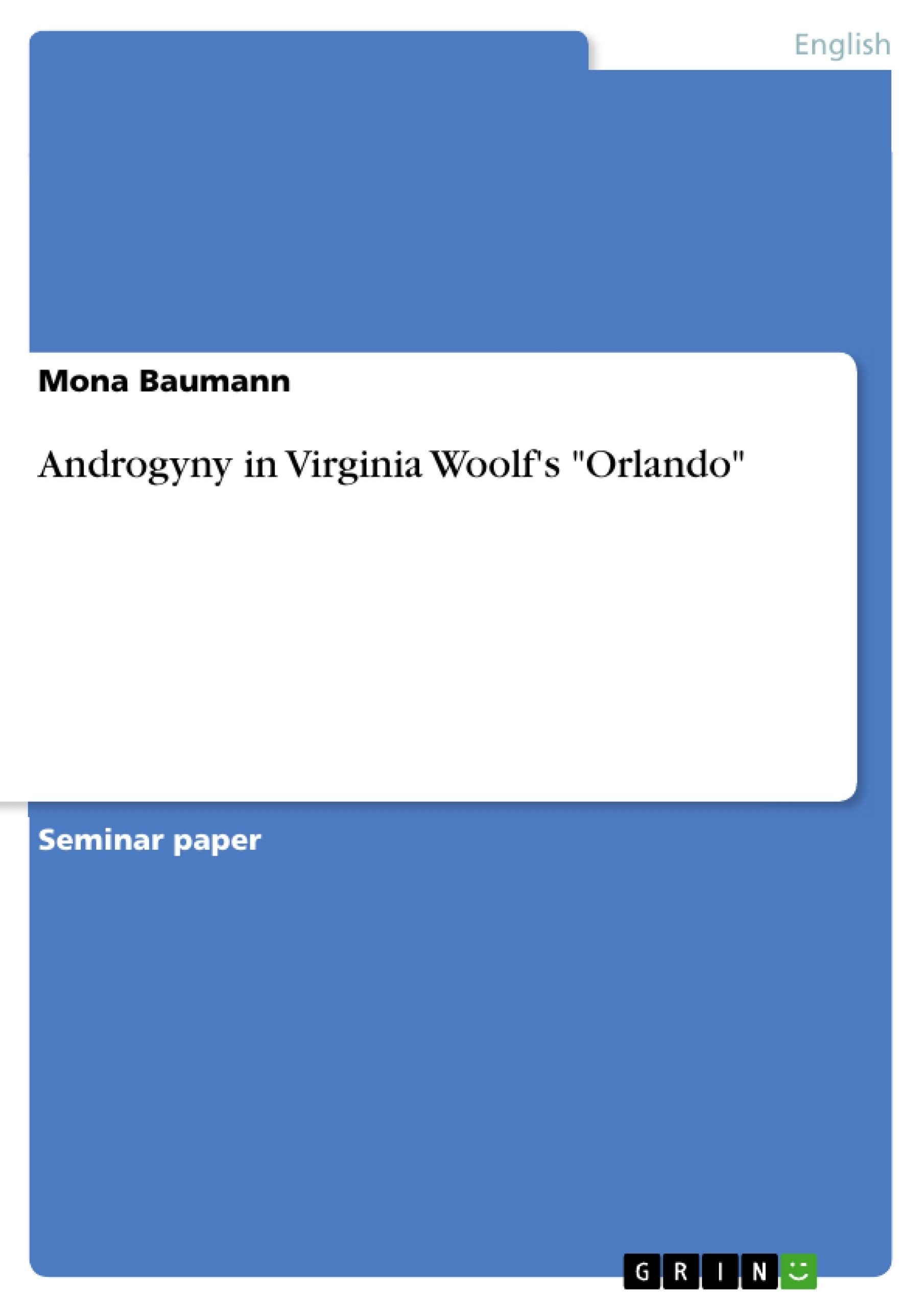Virginia Woolf is one of the most discussed writers, because she created stories with a critical eye, always keeping in mind the challenges of being a female in the twentieth century. The fictional biography guides the reader through the protagonist’s daily life, while simultaneously showing that his life is not daily at all. The author provided a balance within Orlando’s nature by creating a character the reader can, on one hand, relate to, but who, on the other hand, is special and therefore appears different. With contacts to the Bloomsbury Group, Woolf had the possibility to write her critical and controversial works in an encouraging environment.
Inhaltsverzeichnis (Table of Contents)
- Introduction
- Gender
- Androgyny and its use in Orlando
- Orlando as a "man – womanly"
- Orlando as a “woman – manly”
- Conclusion
Zielsetzung und Themenschwerpunkte (Objectives and Key Themes)
This essay explores the concept of androgyny in Virginia Woolf's novel "Orlando," examining how Woolf utilizes the protagonist's gender transformation to critique societal expectations and explore the fluidity of identity. The essay analyzes the relationship between gender and sex, drawing on feminist theory and contemporary scholarship to unpack the complex interplay between biology, culture, and individual experience.
- The concept of androgyny and its representation in literature
- The social construction of gender and its historical evolution
- The relationship between sex and gender, and the challenges of defining identity
- Virginia Woolf's critique of traditional gender roles and societal expectations
- The use of historical perspective to explore themes of identity and transformation
Zusammenfassung der Kapitel (Chapter Summaries)
The introductory chapter sets the stage for the analysis by introducing Virginia Woolf as a critical voice in twentieth-century literature, focusing on her ability to create characters that challenge societal norms. The chapter highlights "Orlando" as a fictional biography that delves into the protagonist's experiences while simultaneously exploring broader themes of identity, gender, and history.
The second chapter focuses on the concept of "gender," defining it as a social construct that shapes individual behavior and perception. The chapter explores various theories of gender, including the idea that gender is performative and that it evolves over time, highlighting the complexities and contradictions inherent in defining gender identities.
Schlüsselwörter (Keywords)
The essay centers on the concept of androgyny, exploring its representation in Virginia Woolf's "Orlando." Key themes include gender construction, sex and gender distinctions, social expectations, identity formation, and the historical evolution of gender norms. The essay draws on feminist theory, particularly the work of Judith Butler, to analyze the performative nature of gender and the challenges of achieving true androgyny.
- Citar trabajo
- Mona Baumann (Autor), 2017, Androgyny in Virginia Woolf's "Orlando", Múnich, GRIN Verlag, https://www.grin.com/document/416824




